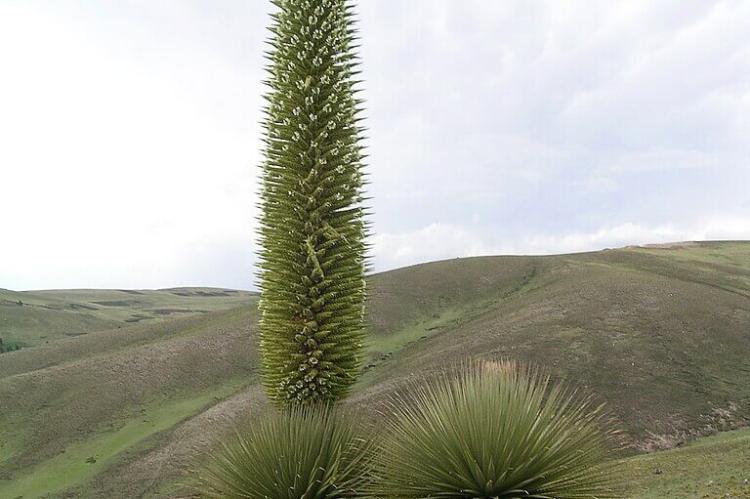Bicentenario-Ayacucho Biosphere Reserve: Nature, History, and Culture in Peru's Central Andes
In the heart of Peru's Central Andes, nestled amidst a breathtaking collage of mountains and valleys, lies the Bicentenario-Ayacucho Biosphere Reserve. It is an expanse of protected wilderness sanctuary of unparalleled ecological and cultural significance, steeped in historical, religious, and social values.
Bicentenario-Ayacucho Biosphere Reserve
Nature, History, and Culture in Peru's Central Andes
The Bicentenario-Ayacucho Biosphere Reserve is located in the central-southern region of Peru, encompassing an area of 312,900.46 hectares (773,477 acres) within the provinces of Huamanga, Huanta, and Vilcas Huamán in the Ayacucho region. Nestled amidst a breathtaking mosaic of mountains and valleys in the heart of Peru's Central Andes, this sanctuary of unparalleled ecological and cultural significance was designated as a UNESCO Biosphere Reserve in 2023.
The area of the reserve is steeped in historical, religious, and social values. The Historical Sanctuary of the Pampa de Ayacucho, located within the reserve, commemorates the decisive battle that sealed Peru's independence from Spanish rule. The area is also home to numerous religious sites, reflecting the deep-rooted faith of the local communities.
The Bicentenario-Ayacucho Biosphere Reserve has two core areas:
-
Pampa de Ayacucho Historical Sanctuary: This vast expanse of land, stretching across the provinces of Ayacucho and Huanta, bears witness to one of the most pivotal battles in Peruvian history, the Battle of Ayacucho, fought on December 9, 1824. This decisive victory marked the end of Spanish colonial rule in Peru and set the stage for independence.
-
Titancayoc Regional Conservation Area: This area is a haven for the world's largest population of Puya raimondii, also known as the 'titanka' or 'Queen of the Andes.' It also supports a diverse range of flora and fauna, reflecting the varied altitudes and ecosystems within the reserve.
Ecosystems
The Bicentenario-Ayacucho Biosphere Reserve is renowned for its remarkable altitudinal gradient, ranging from a mere 1,850 meters (6,070 feet) above sea level to the snow-capped summit of Cotacache Volcano, soaring at 4,450 meters (14,633 feet). This dramatic variation in elevation gives rise to a mesmerizing mosaic of distinct ecosystems, each teeming with unique flora and fauna.
-
Seasonally Dry Forests: The reserve embraces seasonally dry forests at the lower elevations, a testament to nature's resilience. These forests, characterized by their deciduous trees and shrubs, adapt to the alternating cycles of wet and dry seasons, showcasing the remarkable ability of life to thrive in challenging environments.
-
High Andean Wetlands: Ascending the Andean slopes, the reserve unveils its high Andean wetlands, a haven for diverse flora and fauna. These wetlands, fed by glacial meltwater and rainfall, provide essential habitat for many species, including aquatic plants, amphibians, and birds.
-
Relict Forests and Andean Scrubland: Scattered throughout the reserve, relict forests and Andean scrubland stand as remnants of ancient ecosystems, offering a glimpse into the region's rich ecological history. These relic forests, isolated from their original distribution, harbor unique plant and animal species, while Andean scrubland, characterized by low-growing shrubs, provides refuge for various wildlife.
Eight hundred sixty-seven species of wild flora, 133 species of birds, 17 species of mammals, 11 species of amphibians and reptiles, 33 species of butterflies, among others, have been identified within the reserve. One of the reserve's most captivating attractions is the Puya raimondii, the 'titanka' or 'Queen of the Andes.' This elongated, almost giraffe-like flowering plant can grow to an astonishing height of 15 meters (49 feet), making it the tallest flowering plant in the world. Its towering presence and magnificent blooms make it a symbol of the reserve's botanical diversity.
Cultural Heritage
Beyond its ecological significance, the Bicentenario-Ayacucho Biosphere Reserve is also a tapestry of cultural heritage. Indigenous communities, including the Quechua, have called this land home for centuries, living in harmony with their natural surroundings. Their traditions, ecosystem knowledge, and sustainable practices contribute to the reserve's rich cultural identity.
The reserve supports diverse economic activities, including agriculture, livestock rearing, fish farming, tourism, and Andean subsistence herding. When conducted sustainably, these activities contribute to the livelihoods of local communities and the region's overall well-being.
Protection Status
Despite its protected status, the Bicentenario-Ayacucho Biosphere Reserve faces many conservation challenges, including deforestation, illegal hunting, and pollution. Conservation efforts are underway to address these challenges, focusing on community engagement, sustainable development practices, and environmental education.

